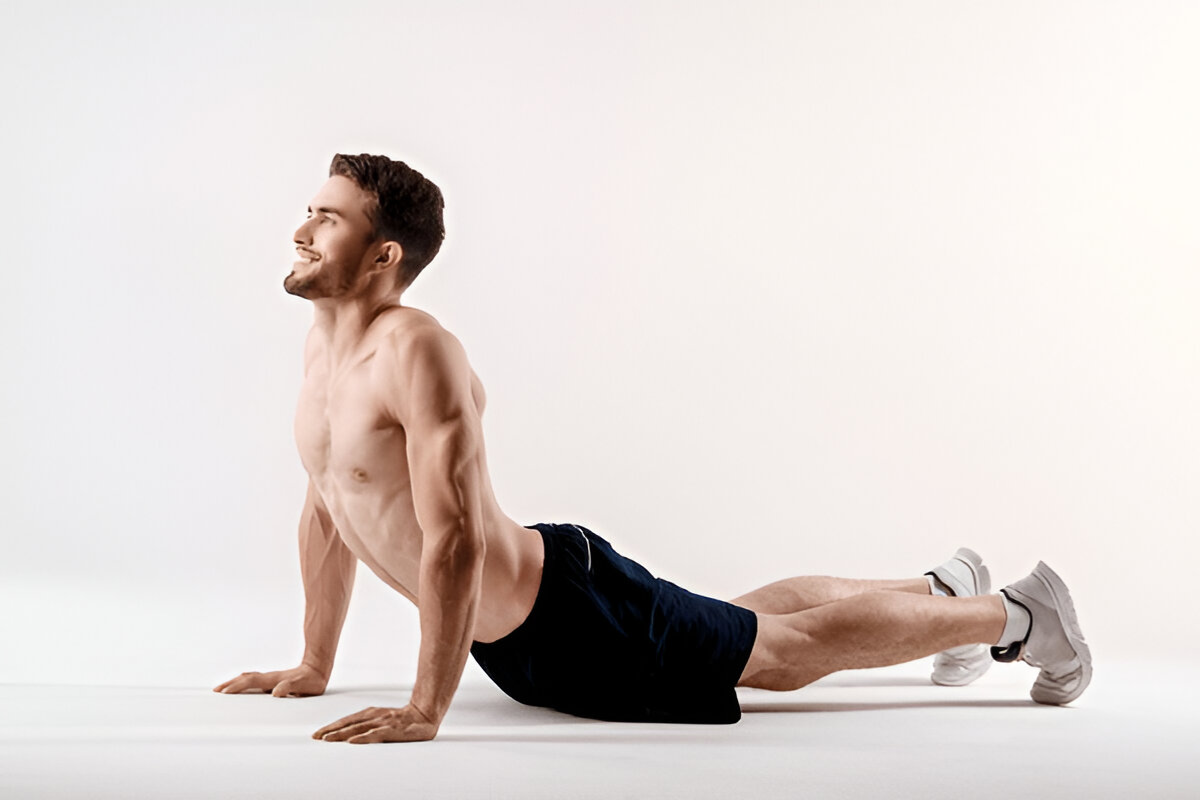
Relieve Lower Back Stiffness Fast With This Simple Prone Spinal Twist
by Nayan in Fitness, Health & Wellness on April 8, 2025If your lower part of the back is feeling uncomfortable because you were sitting for a long time or were working hard at the gym, don’t worry, as you are not alone. Stiff back is a common problem among US adults, and the most effective way to cope with it is through the addition of more controlled movement into your routine. A stretch that is frequently recommended by personal trainers for this particular problem is the prone spinal twist – a gentle but very effective floor-based exercise that can be used to improve and maintain spinal mobility as well as relieve the user of the tightness in the back and core.
However, the move cannot take the place of medical treatment if there is a serious injury, it can only give you an instant relief followed by prolonged benefits as long as you stay consistent with it. Not only is this means a great way to regain the motion in your spine and stabilizing muscles, but it is quite easy to perform it at home using just a mat.
What Is a Prone Spinal Twist?
The prone spinal twist is a rotational floor stretch carried out in the prone position. It is mostly aimed at the gentle unwinding of the spine, the embracing of the deep core muscles, and the liberation of the lower back, the shoulders, and the hip flexors from the fascia. For the desired result, it can be practiced either as a single stretch by just taking each side and keeping the positions for 15 to 30 seconds or as a massaging workout, as you sweep the floor with your arms, unlocking the muscle.
This exercise is along the transverse plane correctional movement where the users’ principles of motion of the body are the rotation and it is a certain direction that is often ignored in typical workouts whose emphasis is either on the front or lateral side kind of motion.
How to Do the Prone Spinal Twist
- Lie face down on a mat with your arms stretched out in a “T” shape or bent into a 90-degree “cactus” shape.
- Your head or temple gene can be laid upon the mat in order to keep the neck from curving unnaturally.
- Proceed by bending your right leg and slowly rotating it to the left.
- While keeping both your shoulders in touch with the floor, do the movement. Do not go beyond your current capacity and also be sure that you are not lifting or twisting your upper back.
- If you can, put your right foot on the floor outside the left leg. If not, then let the leg hover.
- You can hold the position for 15-30 seconds, or perform 6-10 repetitions of slow movements in and out of the position.
- Come back to the center, and repeat the whole process on the other side.
In case you find the full arm extension awkward, change the arm position — the other arm should be bent close to the body while the one that is extended provides support. This variation can also provide a fantastic stretch to the shoulder, not to mention it is safe for the joints.
Chronically Twisting the Spine on the Stomach Must Convey the Need for the Following
- Relief of leg muscles that are constricting the lower part of the back
- Augmentation of the range of spinal rotary movement and flexibility
- A gentle elongation of the chest, shoulders, and hip flexors
- The awakening of the deep stabilizing muscles of the core was recognized
- It was identified that the position of the body and the reduction of the wrong movements are factors that can be worked on to achieve enhancement and the reducing of sway
This is actually a multifaceted stretch: the most eminent thing is that it targets the muscles which are involved in the act of rotation, including but not being limited to the obliques, erector spinae, and the transverse abdominal muscles — i.e. they are the muscles that work both your spine and your movement off during your daily chores and sport activities for you to move and stay stable.
Safety Tips and Alterations
- Never compel your leg down to the ground – just go as far as your flexibility allows.
- Keep both of your shoulders on the ground to perform the stretch more safely and effectively.
- Should you experience intense pain or a pinching sensation, please, stop the stretch and ask yourself if your alignment was good. If it doesn’t feel tight yet is rather painful, you’re not doing the exercise correctly.
- Inhale deeply and move in a controlled way. Guide your exhale to each repetition or hold.
This movement can put a lot of strain on your back if it is really tight, but the good news is that it’s a clear signal that you actually need it. The practice you put into the routine will result in you experiencing an increase in the range of motion in your hips and spine over time.
How Often Should You Do It?
Give the prone spinal twist a shot 2-4 times per week – it can be performed at the end of your exercise as a part of your mobility work or as the first thing in the morning to get rid of the stiffness. It’s an effortless, no-equipment body and for your back and spine that gives you the best support possible.
When it comes to lower back stiffness, one does not always have to go for prolonged practices or visit the chiropractor. In some cases, a single purposeful movement, done correctly, can help your body regain its normal operation. The prone spinal twist is a stretch you can easily add wherever and it gives you immediate positive results.
If you’re lifting or doing some cardio, or to put it simply you’re just spending a lot of time at a sitting job, this exercise can provide you with the ability to do movements more easily and feel better in your everyday life.








